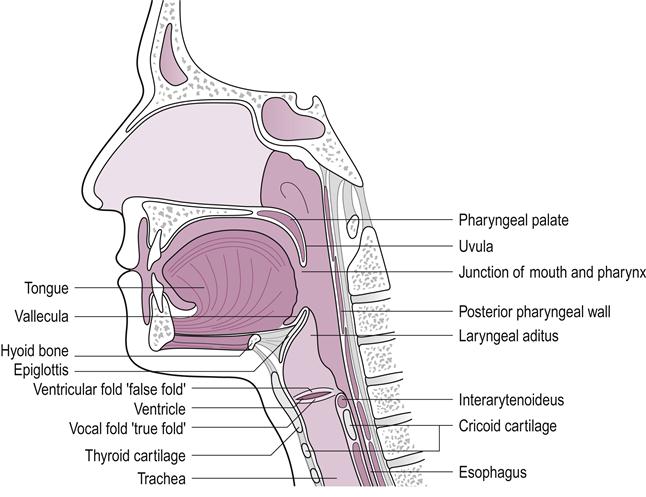Dysphagia
Darci Becker and Lisa Tews
Definition and prevalence
For most individuals, eating is a pleasurable and social event that is an important aspect of quality of life. However, for those with dysphagia, the task of eating may be difficult and even lead to serious medical consequences, such as airway obstruction, dehydration, malnutrition, aspiration pneumonia or death.
Dysphagia (pronounced ‘dis-fay-ja’ or ‘dis-fah-zha’) is the medical term used when an individual experiences difficulty with or disordered swallowing. Dysphagia is a symptom of underlying pathology, not a primary medical diagnosis.
Dysphagia occurs across the age spectrum, from premature babies to elderly adults. Estimates of prevalence vary, depending on the patient population, setting and criteria used. Rates cited in the literature include:
• 10–25% of all children, 40–70% of premature infants and 70–90% of children with medical/developmental delays (Roche et al., 2011).
• 25–30% of patients admitted to hospitals.
• 61% of adults admitted to acute trauma centers.
• 41% of individuals admitted to rehabilitation settings.
Conditions associated with a high prevalence of dysphagia include stroke, multiple sclerosis, Parkinson’s disease, amyotrophic lateral sclerosis, cerebral palsy and tumors of the head and neck or esophagus (American Speech–Language–Hearing Association, 2008).
Etiology
Dysphagia can be caused by a multitude of conditions (Box 54.1). Medications that reduce saliva production, muscle strength, coordination or alertness level may also affect swallowing function. These may include antipsychotics, anticonvulsants, antihistamines and barbiturates. The risk for dysphagia increases with age. One reason is that natural, healthy aging results in alterations in the swallowing mechanism, known as presbyphagia. This contributes to a general decline in functional reserve, which increases susceptibility of dysphagia in older individuals when additional stressors, such as acute illness, occur (Ney et al., 2009).
Normal swallowing physiology
The process of deglutition, or swallowing, is typically divided into four stages that overlap and are interdependent.
For a normal swallow to occur, there must be oral propulsion of the bolus into the pharynx, tongue base to pharyngeal wall propulsion to transport the bolus through the pharynx to the esophagus, airway closure and upper esophageal sphincter opening (Fig. 54.1). Airway closure is achieved when the epiglottis inverts over the entrance to the larynx, directing the bolus toward the esophagus and away from the airway, and when the false and true vocal folds approximate. During the swallow when airway closure is achieved, respiration halts until the swallow is completed.
When one or more of the stages of swallowing is atypical, there is an increased potential for aspiration to occur. Aspiration is defined as the entry of material into the airway below the level of the true vocal folds. If no cough response occurs with aspiration, it is referred to as ‘silent aspiration’. Penetration is defined as the entry of material into the laryngeal vestibule which, unlike aspiration, remains above the level of the true vocal folds. In the past, both penetration and aspiration have been considered to be pathologic occurrences, not present in those with normal swallowing. Studies continue to affirm that aspiration is not a normal finding in awake individuals, however recent evidence indicates that occasional, high penetration is present in normal individuals, particularly with increasing age (Daggett et al., 2006; Allen et al., 2010).
There are many signs and symptoms of dysphagia (Box 54.2). It should be noted that the symptom of gagging is listed in Box 54.2. In some instances, physicians order a swallowing evaluation when an oral motor examination indicates that an individual lacks a gag reflex. Data, however, do not support a relationship between the gag reflex and ability to swallow. Studies have confirmed that individuals with a normal gag reflex may exhibit aspiration and, conversely, individuals who lack a gag reflex may swallow normally (Leder, 1996, 1997).
Stay updated, free articles. Join our Telegram channel

Full access? Get Clinical Tree








